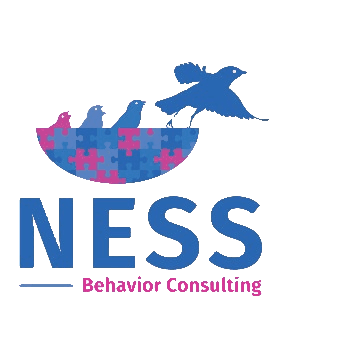Understanding Neurodiverse Siblinghood
- NESS Behavior

- Jun 25, 2021
- 4 min read
Updated: Jan 12, 2023
Written by: Liberete M. Edited by: Chantel S., Shain S.
In the early years of our lives we were taught two valuable lessons from our parents, caregivers and teachers.
“Treat others the way that you want to be treated.”
“It’s what’s on the inside that counts.”

We learned that our classmates, friends and even our own siblings were not exactly the same as ourselves. Each person had something that made them unique, from their interests and dislikes to their levels of cognitive development.
These teachings helped to foster the ideal of creating an environment and human experience of inclusivity, kindness and respect and continue to follow us throughout adulthood.
As adults, we now understand that special care and attention is required to attend to individual needs.
Parenting is a role that varies from family to family, especially with children who have different neurological abilities. The practice of accepting and including these multifaceted needs is called neurodiversity.
Let’s explore how you can find a balance in supporting your children with differing abilities and how you can further develop your parenting skills.
Setting Roles: How To Establish Positive Cooperation
In a household with multiple siblings parents commonly expect their eldest child to be a leading example for the youngest. This expectation may look different with neurodiverse families. Siblings who do not have ASD, regardless of being older or younger than their sibling with autism or ASD, are given additional responsibilities to assist. As a parent, it is important to consider the following when delegating tasks to your children.
First, education and communication are the foundations to building a healthy relationship with the members of your family. When a parent discovers that their child has autism it is natural to dig into as many resources as possible to gain a better understanding. This instinct to take on information is valuable to your child's developmental experience. It is also advantageous for neurotypical children to take part in this as they will have many questions and uncertainties in regards to the components of ASD.
Introduce your child to the basics of autism, using language that they can understand. Explain that their sibling may express their emotions differently than them, learn differently and will require help with certain tasks that they may find easy to do on their own.

A great way to establish positive cooperation is to give space for your child to express how they feel as they take on new responsibilities. Many children enjoy being helpful, however, they may unwittingly become burned out as they face challenges, because they are too young to gauge their own levels of stress.
As the parental figure, you can help manage stress by opening the opportunity for your child to share their thoughts about the tasks that they're given and to allow them to set limitations for what they are comfortable with doing. Discussions about boundaries will provide you with insight to your child's strengths and help you to determine where they can make the best contribution as a supportive member of the family.
Create a list of ways your child can help you assist their sibling and let them select their favorite tasks. Be sure to take time to acknowledge the efforts of your children with positive words and actions of appreciation for their hard work.
Forming Bonds: How To Provide Individual and Collective Attention
Time management is essential to organizing the responsibilities as a caregiver. Attending parent meetings, therapy sessions, transferring kids to and from after-school activities all while working and taking care of the home is a challenge that many face.
On top of that, children require different kinds of attention depending on their needs and skills and it can be tricky to pivot between filling one kind of emotional need and another.
Here are some engaging ways that you can meet your children's emotional needs while creating positive connections together as a family unit.
Dedicate 1:1 time with your children
Plan a 1-2 hour activity around your child's interests that you can be involved in once a month to show them undivided attention. Encourage engagement by giving your child creative freedom to plan a general theme for the activity and provide guidance as needed.
Spend family time together, establish bonds & traditions

Many children with autism excel with routine. This is a great opportunity to establish some fun family traditions that can encourage bonding between both siblings.
Collaborate together and plan an activity around everyone’s interest and delegate duties for everyone to get involved. Keep in mind, when participating in a group it is important to consider participants' needs and levels of comfort. Compassion is key to building a positive bonding experience among your family members.
The Next Step: Get Involved With Parent Training
The idea of neurodiversity expands the spaces that have historically excluded neurodivergent people from participation. It validates individuals with different learning abilities and acknowledges that they are just as integral to the space as anyone else.
Neurodiverse families can be strong, loving, and supportive with consistency and the right tools.
NESS Behavior Consulting offers 1:1 and group training sessions for parents of children with autism and other developmental disabilities.
Our parent training sessions are invaluable and will equip you with knowledge and confidence in your parenting practices.





Comments